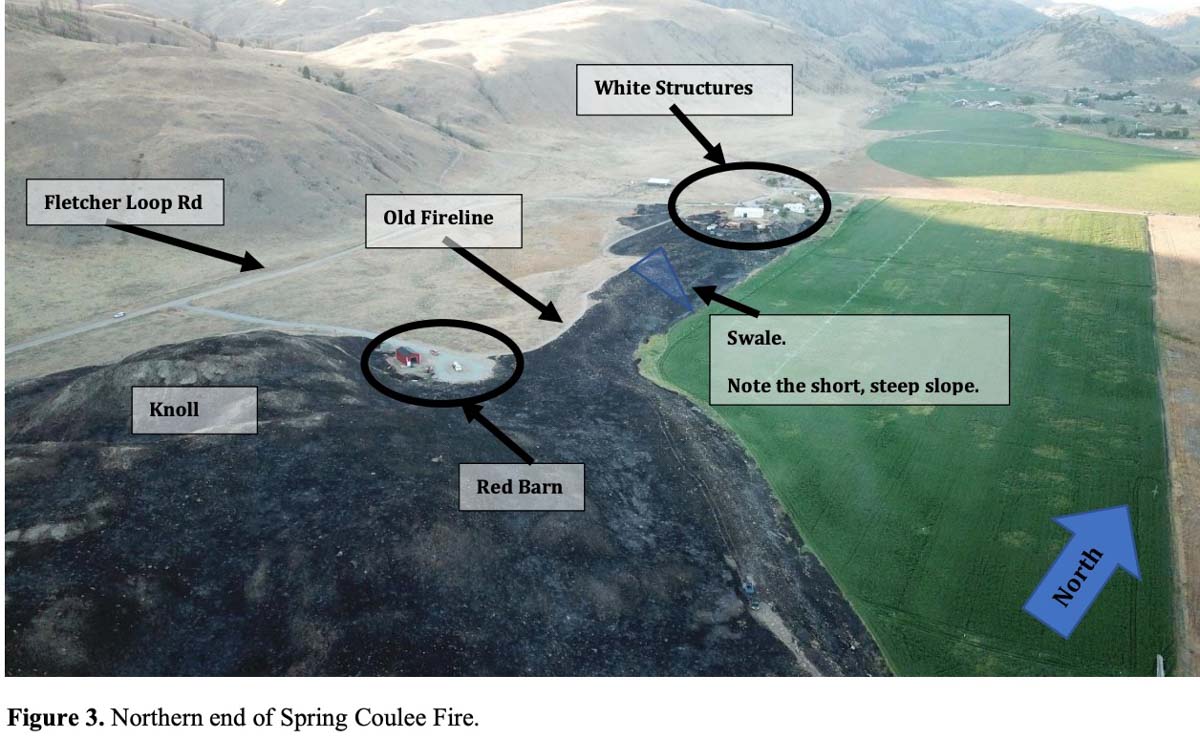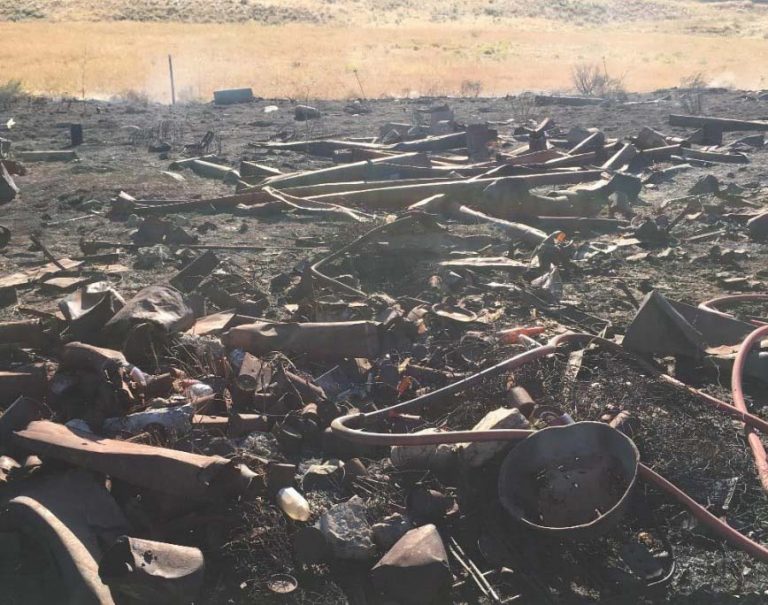Date Posted:17 April 2020
Spring Coulee, Washington Wildfire takes Fire Chief’s life
At 55 years old, Assistant Fire Chief – Christian Dean Johnson’s life was taken following an appliance immobilisation event during a Wildfire near Okanogan, Washington.
On September 1st 2019 at 1600, the Incident Commander reported a grass fire, later known as the Spring Coulee Fire, of approximately 5-10 acres.

Gathering momentum in the dry conditions, the fire began spreading rapidly. Assistant Chief Johnson arrived at the fire scene, and jumped into action, storing his turnout jacket on the back of the truck between the cab and a storage compartment at the truck’s rear.
At 1615 the Chief arrived to the scene with a third firefighter. Only 11 minutes after, a MAYDAY was called for the entrapment. The Chief operated the truck whilst Assistant Chief Johnson and the 3rd firefighter began the mobile attack with the hose.
Very early into the mobile attack, the wind changed, pushing the fire rapidly in the direction of the firefighters.
A report has been released on the incident, which states:
"The exterior firefighter didn’t open the passenger door; fire was immediately at his back and had caught the passenger mirror on fire. He ran around to the driver’s side of B341 and climbed on the outside of the truck again. As fire moved under B341, Assistant Chief Johnson attempted to drive B341 away from the area. After traveling five or six feet, B341 “lurched” and then became immobilized. With flames rolling up the exterior firefighter’s legs, visible on the passenger side of the vehicle itself, under the truck and in front of them, both the exterior firefighter and Assistant Chief Johnson exited the vehicle to escape the fire. Assistant Chief Johnson and the exterior firefighter ran toward the old cat trail at slightly different angles. In Assistant Chief Johnson’s path, hidden by vegetation, lay a substantial field of rocks and metal debris (Figure 9). While it is impossible to know for certain, it is thought Assistant Chief Johnson may have become entangled in the debris and was overtaken by fire."

Image of the debris and rocks under the vegetation thought to have possibly tripped Assistant Chief Johnson up, prior to being overtaken by the fire.
The Report also states:
"The exterior firefighter, with fire surrounding him—and at times reaching up between his legs—was able to escape the advancing fire. The exterior firefighter and the fire reached the road at approximately the same instant.
As it was starved of fuel, the roaring and crackling of the fire quieted and the exterior firefighter from B341 immediately turned around to head back into the black and reestablish contact with Assistant Chief Johnson. The firefighter located Assistant Chief Johnson approximately 150 feet from the exterior of B341. The MAYDAY was called at 1626.
[…]
Just before 1655, the surface winds shifted to a south-southwesterly direction. This pushed a “finger” of fire north of the structures on the eastern flank and increased fire behavior in the area. At approximately 1655, the engine on the eastern flank requested air support as “we are trapped here” and they needed water to continue effective structure protection. A helicopter in the area had already spotted the flare-up and was able to deliver water within seconds of the radio call. At least one additional water drop was completed by a [single engine air tanker]."
According to Wildfire Today, the report on the incident concluded that the lack of personal protective equipment above the waist, contributed to the severity of his injuries; “Personnel involved in the Spring Coulee Fire highlighted six core lessons. These lessons are focused on communications, training, medical pre-positioning and medical evacuation coordination, vehicles, access, and personal protective equipment.”
Read the full report here: https://wildfiretoday.com/documents/SpringCouleeRpt.pdf
Thermaguard offers no opinion as to this devastating, fatal incident. We can be appreciative of the advances in Crew Protection Systems widely adopted in Australia.
